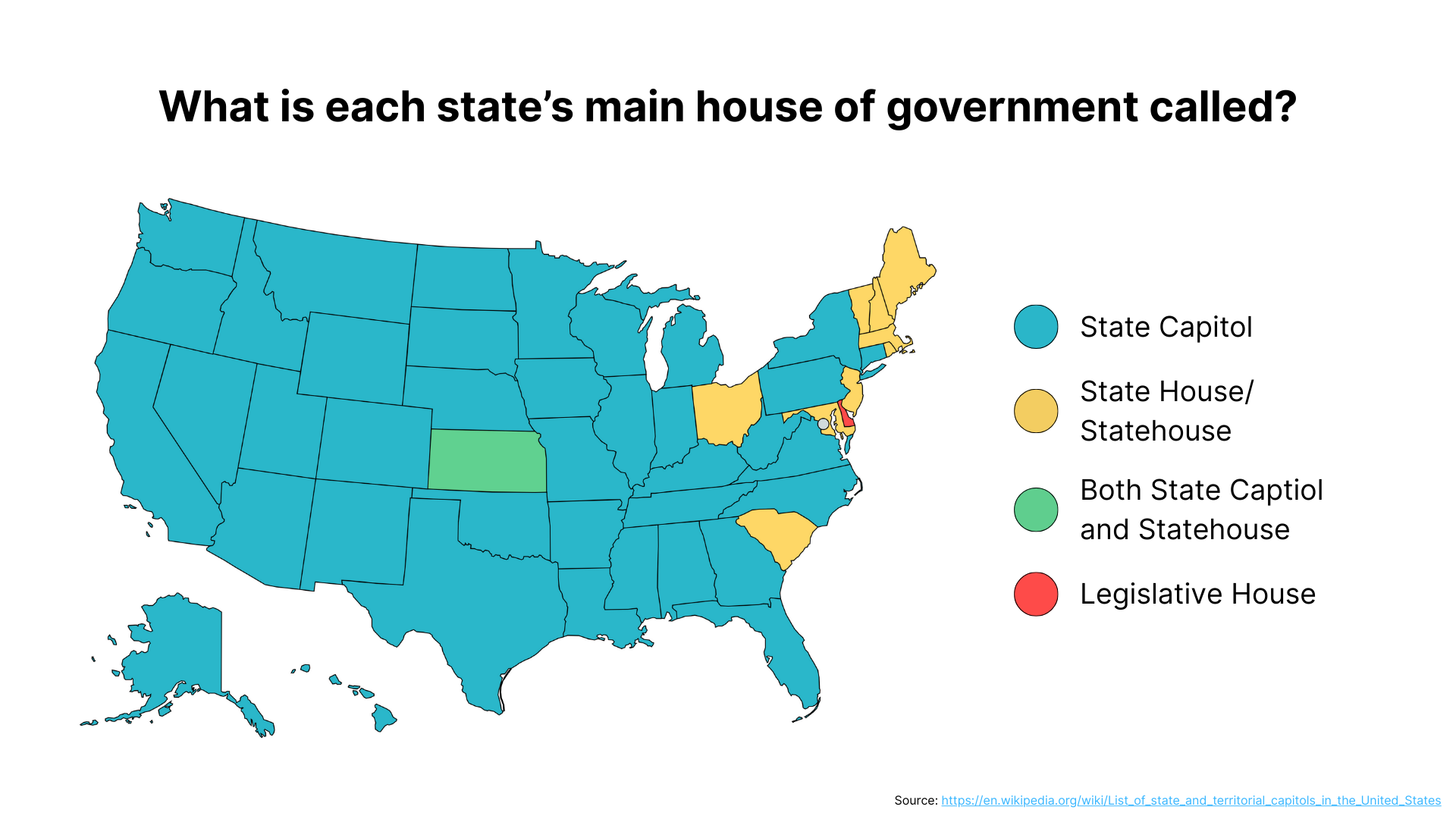Main Houses of Government by State Map


Marcus Rodriguez
Historical Geography Expert
Marcus Rodriguez specializes in historical cartography and geographic data analysis. With a background in both history and geography, he brings unique...
Geographic Analysis
What This Map Shows
This map provides a clear and informative overview of the main houses of government across the United States, detailing what each state calls its primary governmental building. From state capitols to municipal buildings, each location plays a crucial role in the political landscape of its respective state. The visualization highlights the diversity in nomenclature and function of these buildings, offering a glimpse into how state governance operates at a local level.
Deep Dive into Houses of Government
Every state in the U.S. has a designated house of government, often referred to as the state capitol. This building typically houses the offices of the governor as well as the chambers for the state legislature. Interestingly, while most states maintain their traditional capitol buildings, some have evolved in their functions and structures over time.
For instance, the **Alabama State Capitol** not only serves as the governor's office but has also been transformed into a museum showcasing the state's rich history. However, the nearby State House is currently under demolition to make way for a new structure, illustrating the ongoing evolution of government facilities.
In **Arizona**, the original State Capitol has transitioned into a museum, with the legislature and the governor’s offices now located in separate, modern buildings. This shift reflects a common trend where historical buildings are preserved for their cultural significance while practical governance continues elsewhere.
On the other hand, **Nevada** and **North Carolina** have also seen their original state capitols become obsolete for legislative functions. In these states, formal governmental meetings now take place in dedicated legislative buildings, highlighting a move towards more specialized facilities that can better accommodate the needs of current governance.
It’s fascinating to consider how these changes impact the political landscape. In some cases, the historic capitols are preserved as symbols of state pride, while in others, the shift to more functional buildings signifies a modernization of government operations. This trend raises questions about the role of architecture in politics and governance. How do the buildings we choose to use reflect our values and priorities as a society?
Regional Analysis
The map reveals a variety of regional characteristics in the nomenclature and function of government buildings. In the Northeast, for example, states such as **Massachusetts** and **New York** maintain traditional capitol buildings that serve both as operational hubs for governance and as historical landmarks. This is in sharp contrast to the more modern approaches observed in the Southwest, where states like **New Mexico** and **Arizona** have reimagined their government facilities.
In the Midwest, the focus often remains on maintaining historical capitols, yet there are exceptions. States such as **Indiana** and **Ohio** have retained their grand capitol buildings, which serve as both governmental and cultural centers. Meanwhile, in the South, states like **Florida** have opted for a more modern aesthetic in their governmental buildings, indicating a shift towards contemporary design and functionality.
Interestingly, the West showcases a blend of both historical and modern structures. States like **California** feature ornate capitols that stand as monuments to their history, while others like **Washington** have embraced modern architecture.
Significance and Impact
Understanding the main houses of government across the states is crucial for grasping the dynamics of political power and governance in the U.S. These buildings are more than just physical spaces; they represent the heart of democracy and civic engagement. They are where laws are created, policies are debated, and the very governance of the state occurs.
Moreover, the trend towards modernization and specialization in government buildings reflects broader societal changes, such as the increasing demand for transparency and efficiency in government operations. As states evolve, the way they structure their governmental facilities will likely continue to change, impacting how citizens interact with their government.
As we look to the future, it will be interesting to see how these trends develop. Will more states follow the lead of Arizona and Alabama in repurposing historical buildings? Or will the trend towards modern, functional spaces dominate the landscape of state governance? One thing is for sure: the way we configure our houses of government will continue to shape the political narrative of our nation.
Visualization Details
- Published
- September 24, 2025
- Views
- 48
Comments
Loading comments...